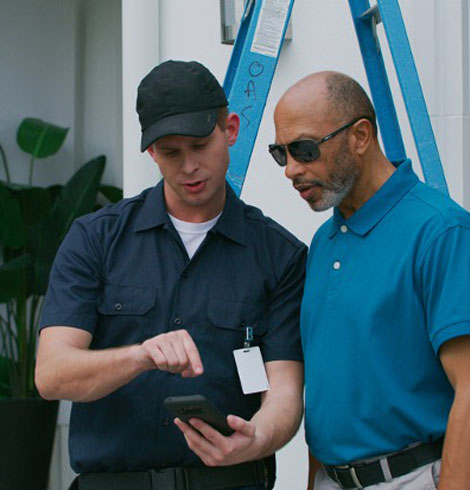SMART HOME TECHNOLOGY
A preconstruction low voltage consultation is crucial for several reasons:
Planning and Design: Low voltage systems, such as telecommunications, security, audiovisual, and data networks, require careful planning and design to ensure they meet the needs of the building’s occupants. Consulting with experts before construction begins allows for the incorporation of these systems into the building’s design seamlessly.
Cost Efficiency: Addressing low voltage requirements early in the construction process can help identify potential cost-saving opportunities. By considering the placement of cables, outlets, and equipment during the planning phase, unnecessary expenses due to rework or retrofitting can be minimized.
Integration: Many low voltage systems need to integrate with other building systems, such as electrical and HVAC. Consulting with low voltage experts before construction allows for proper coordination and integration, reducing the risk of conflicts or compatibility issues later.
Code Compliance and Regulations: Low voltage systems must comply with building codes and regulations. Consulting with professionals familiar with these requirements ensures that the design and installation meet all necessary standards, avoiding costly delays or fines due to non-compliance.
Future-proofing: Technology is constantly evolving, and low voltage systems are no exception. A preconstruction consultation allows for the incorporation of flexible infrastructure designs that can accommodate future upgrades and advancements in technology without requiring major renovations.
Overall, a preconstruction low voltage consultation helps ensure that the building’s low voltage systems are designed, installed, and integrated effectively, meeting the needs of both current and future occupants while minimizing costs and compliance risks.
ROUGH-IN PHASE
-
- Wiring Installation: This phase involves the initial installation of low voltage wiring throughout the home. Cables are run through walls, ceilings, and floors according to the pre-determined layout discussed during the design phase.
- Placement of Boxes and Outlets: Junction boxes, outlets, data jacks, and other connection points are installed at this stage. These boxes serve as access points for connecting devices and accessing low voltage services.
- Testing Rough-In Connections: Basic testing may be conducted during this phase to ensure that wiring connections are secure and meet building code requirements. However, comprehensive testing typically occurs during the trim-out phase.
STEP 1
STEP 2
TRIM-OUT PHASE
-
- Installation of Devices and Fixtures: In the trim-out phase, devices and fixtures such as light switches, outlets, data plates, and control panels are installed. These components are connected to the wiring installed during the rough-in phase.
- Final Testing and Quality Assurance: Comprehensive testing is conducted during the trim-out phase to ensure that all connections are functioning properly. This includes testing signal strength for internet and cable connections, verifying the functionality of security systems, and testing the operation of smart home devices.
- Final Adjustments: Any necessary adjustments or fine-tuning may be made during this phase to ensure that all low voltage systems are operating optimally.
Throughout both phases, clear communication between the installation team and the homeowner is essential to address any questions or concerns and ensure that the final result meets the homeowner’s expectations.
COMPLETION AND HANDOVER
During the handover process for your home’s technology and low-voltage options selections, you can expect a comprehensive walkthrough and orientation session. Here’s what you might encounter:
The handover process usually begins with an introduction to the team who will guide you through the technology features of your new home. They’ll provide an overview of what to expect during the session.
You’ll receive a demonstration of the various technology systems installed in your home, such as smart home automation, security systems, audio-visual setups, and low-voltage options like structured wiring for data and communication.
Expect hands-on training on how to operate each system effectively. This might include learning how to use control panels, mobile apps, voice commands, and remote controls to manage different aspects of your home technology.
You’ll be briefed on common troubleshooting steps for any potential issues you might encounter with your technology systems. This could involve resetting devices, checking connections, or contacting support services.
You’ll receive comprehensive documentation and user manuals for all installed systems. These will serve as valuable references for future use and troubleshooting.
The handover team will encourage questions and provide clarification on any aspects of the technology systems you’re unsure about. This is your opportunity to address any concerns or seek further information.
Before concluding the handover process, you’ll have the chance to perform final checks to ensure everything is functioning as expected. Once satisfied, you’ll sign off on the handover documents, indicating your acceptance of the installed technology systems.
Overall, the handover process is designed to empower you with the knowledge and skills needed to make the most of the technology features in your new home, ensuring a smooth transition and optimal enjoyment of your living space.

Make Your Home Smart Now!
We’re here to answer any questions you might have about living in a SYNCT Smart Home. We can also help you find an Ingenious partner in your area.





